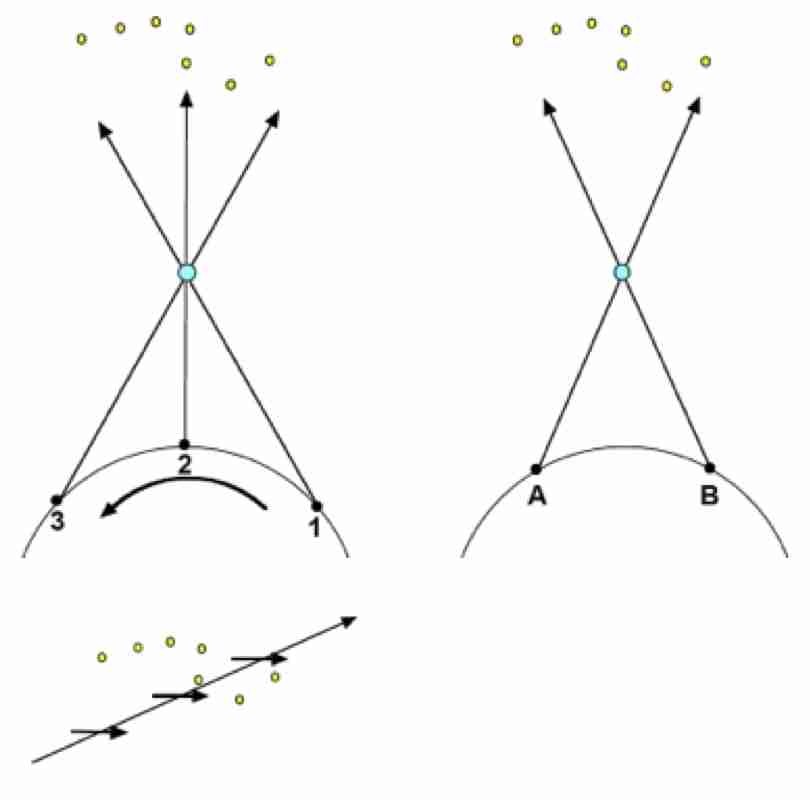Several astronomers, including Girolamo Fracastoro (ca. 1478-1553) and Petrus Bienewitz or Bennewitz (Apianus or Apian, 1495-1552) observed that comet tails are directed opposite to the Sun. This observation was not obvious, because one cannot see the Sun and comets simultaneously due to the low brightness of the latter.
Then, the comet in 1577 finally provided the opportunity to obtain a reliable distance. Michael Mästlin (1550-1631), a convinced Copernican, and the famous Danish astronomer Tycho Brahe (1546-1601), one of the greatest observers of all time, noticed that the comet did not show the daily deviations from its position that it should have presented if it was close (see figure). Tycho Brahe also compared two simultaneous measurements of the position of the comet relative to nearby stars, one that he carried out himself in his Uraniborg observatory on the island of Hven in Denmark, and the other led by his colleague Thaddaeus Hagecius (1525-1600) in Prague, some 600 kilometers (372 miles) away.
The difference between the positions measured by the two astronomers was only 1 to 2 minutes of a degree, whereas it should have been 6 to 7 minutes if the comet was at the same distance as the Moon. Tycho Brahe thus considered that the comet was six times more distant than the Moon. In reality this is only a lower limit, but no matter: the comet was unquestionably more distant than our satellite, and we now know that comets are not phenomena of the atmosphere.
Galileo (1564-1642), who did not like Tycho Brahe, was not convinced by his demonstration. Then a controversy followed. It began in 1618 and took several years to subside, ending with the victory of the supporters of the great distance of comets. Johannes Kepler (1571-1630), a student of Tycho Brahe, defended his master against Galileo, whom he greatly admired, in a pamphlet of 1625 entitled Tychonis Brahei Dani Hyperaspistes (“The shield over Tycho Brahe, the Dane”). It discussed for the first time ideas about the nature of comets:
The head is like an accumulated nebula, somewhat transparent; the tail or beard is an emanation of the head, expelled by the Sun’s rays in the opposite direction, and in this continual outpouring the head is finally exhausted and consumed, so that the tail mean the death of the head.
There is nothing to change in this description: It is actually the material expelled by the comet which constitutes the tail pointing in the opposite direction to the Sun, and comets eventually disappear.









